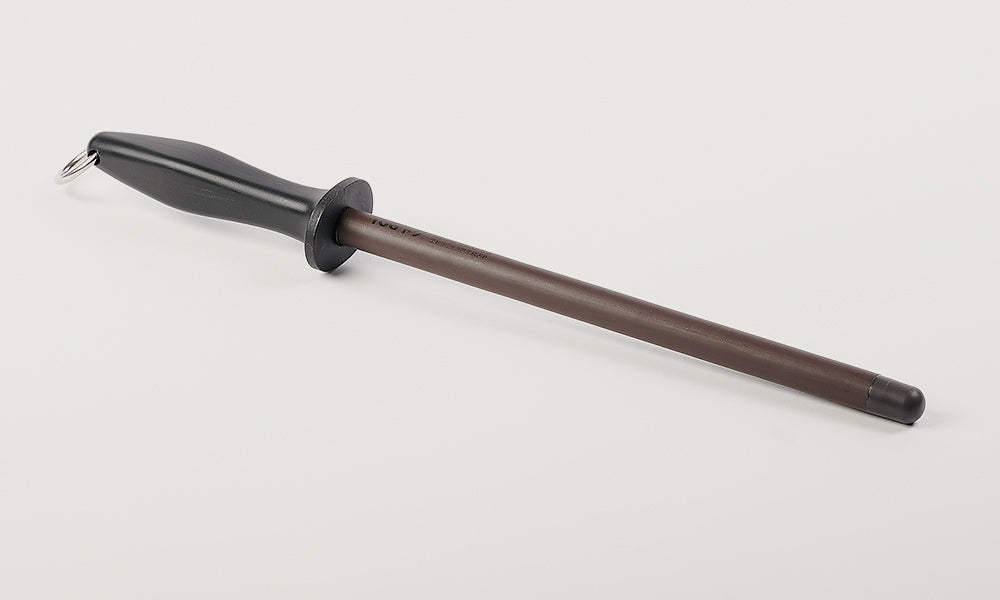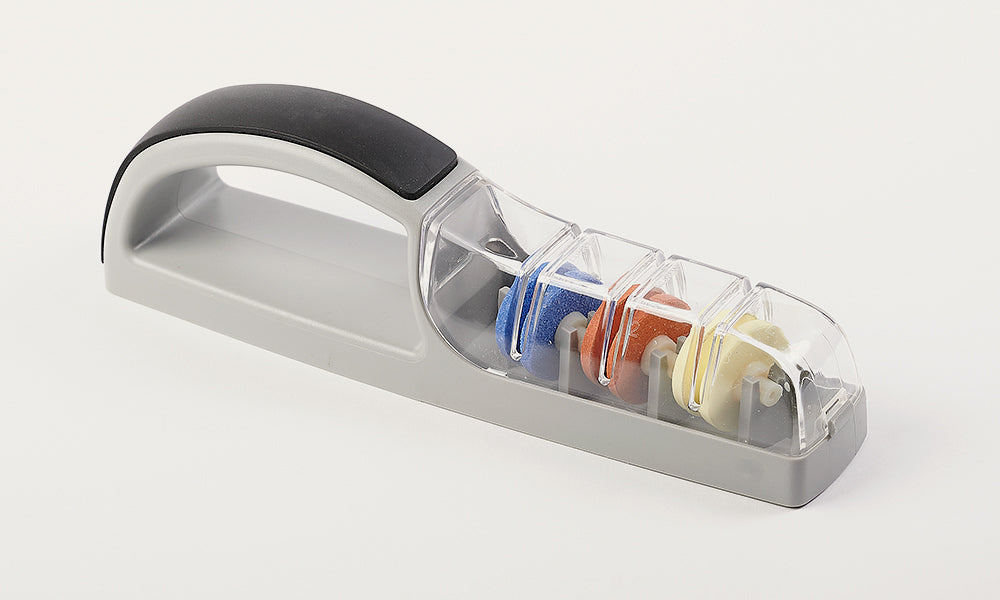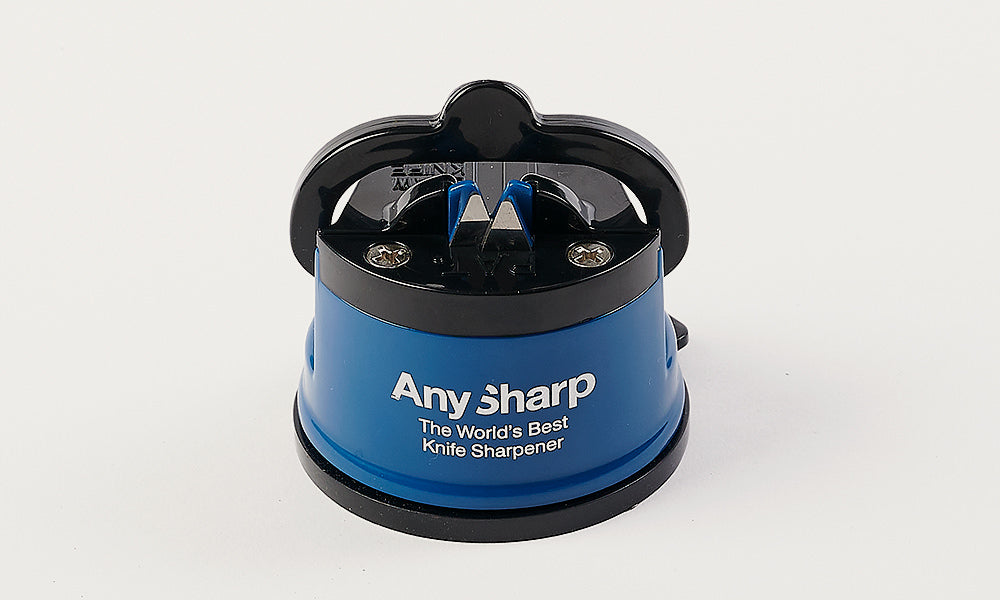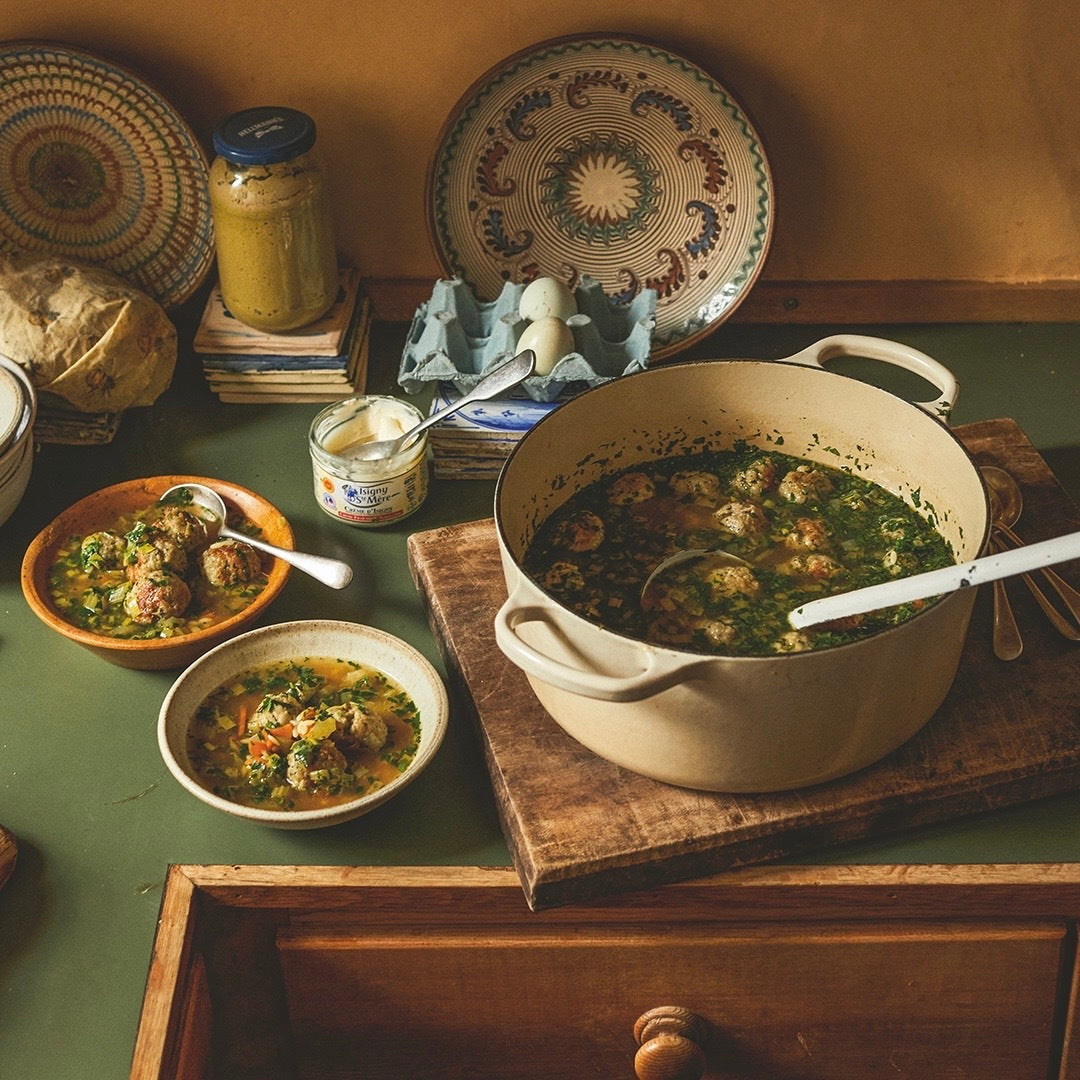The short answer is to use good quality Japanese whetstones, then maintain the edge with a ceramic honing rod.
NOW THE LONG ANSWER:
There really are quite a few ways of sharpening knives. Here I’ll review the most common ones to help you choose what’s right for you.
Before we start, a couple of definitions:
“Sharpening” means removing blade material and grinding an edge onto a knife. Any knife can be sharpened no matter how blunt.
“Honing” means straightening the edge of a knife using a honing rod or “hone”. Tiny bits of the cutting edge get bent / folded over during normal use. The term can also mean ‘refining’ in terms of sharpening.
The short answer: Use good quality Japanese whetstones, then maintain the edge with a ceramic honing rod.
STEELS AND HONING RODS
These are quick and easy to use and are for routine maintenance of knives. They can keep a sharp knife sharp for a period of months but they can't sharpen a dull knife. They are used freehand (in the air), against the body or vertical with the tip down on a table surface. At home they can be used weekly whilst chefs normally use them every day or multiple times a day.
Read more about how to sharpen a knife with a honing rod / steel here.
There are 3 types:
TRADITIONAL STEELS

A traditional metal ‘steel’ or ‘hone’ straightens (“hones”) the blade of a knife. Some are abrasive and sharpen too. This type of steel is strong but as not as effective on hard Japanese steels.
CERAMIC HONING RODS

This is a more modern version of the ‘steel’ that, as well as honing, also sharpens the knife a little as it has a fine abrasive surface. Ceramic is much harder than metal so it’ll hone even the hardest of Japanese steels. Like a traditional metal steel, these can be used frequently and are simple and quick.
DIAMOND STEELS

Like a traditional steel but coated in small diamonds. These are fairly rough and sharpen knives by removing material. Harsh on the knife but more effective on really blunt knives than steels / hones are. Don’t use these so often as they wear down your blade fast.
WHETSTONES
Whetstones are blocks of man-made or natural stone that have abrasive particles of a consistent size. They are used with water – some you need to soak for a few minutes before use (“soaking stones”) and some you don’t (“splash and go”). Using whetstones is a skill you can learn. Once you’ve understood a few principals and put in a little practice, whetstones can provide you with amazingly sharp knives forever. They give the best results of all methods of sharpening. You use them in a ‘progression’, starting with coarse stones and moving to finer and finer grits to get your knives sharper and sharper. Whetstones can be a little messy and it’s often worth sharpening more than one knife at a time because of the time it takes.
Read more about how to sharpen a knife with a whetstone here.
WATERSTONES

Waterstones are whetstones that are designed to be used with water.
OILSTONES

Like Waterstones but used with mineral oil instead of water. They are messier and have largely now been replaced by waterstones.
DIAMOND PLATES

These are solid metal plates coated with industrial diamonds. They work very fast and are aggressive. They can be used for repair work, removal of big chips and quick creation of a new edge. Because they always stay flat, they are also perfect for flattening whetstones (“lapping”). Diamond plates can also sharpen ceramic knives.
PULL-THROUGH SHARPENERS
These products are an alternative to whetstones that require less skill. In my opinion, it is definitely better to use a pull-through sharpener than to not sharpen your knives at all.
WHEEL TYPE

These have small ceramic wheels that sit in tiny baths of water. The ceramic wheels have a V channel which sets the angle and creates a new edge on your blade. Keep your knife vertical and drag the entire length of the blade through. Different wheels have different grits (e.g. coarse, medium, fine). Make sure you get one that is set at the correct angle for your knife. Different brands vary in performance so check reviews.
CROSSED STEELS TYPE

These work like traditional steels, honing your edge with two steels held at a specific angle to form an ‘X’ shape. Like steels, these are for maintenance of a sharp edge, not for sharpening a blunt knife.
BLADED TYPE

These have two blades, typically tungsten carbide, which strip off steel in one motion when you drag your cutting edge through. These will wear your blades away fast and are not recommended.
ELECTRIC KNIFE SHARPENERS
There are many electric knife sharpeners on the market. At TOG we don’t recommend these: Firstly, they remove metal very fast. This means that every time you use them you grind a significant amount of steel off your kitchen knife, making it a fraction smaller. Secondly, they produce heat which can potentially affect the strength, hardness or toughness of your knife blade. Lastly they are quite expensive.

STROPS
A paddle strop is a strip of material (normally leather) stuck onto a rigid base, normally a piece of wood. It is used for finishing an edge after a knife has been sharpened, making it ‘shaving’ sharp. An abrasive stropping compound can be applied to the leather to sharpen to specific grits and to increase the effectiveness of the strop, or leather can be used on its own as it naturally very slightly abrasive. A strop also removes any tiny burr left over after the sharpening process.
NOTE: A ‘hanging’ strop is similar to a paddle strop but is a piece of flexible leather hung from one end and held at the other end. These were used by barbers to strop straight razors but aren’t suitable for kitchen knives.

GUIDED SHARPENING SYSTEMS
These contraptions hold a knife at a specific angle for you while you rub a small whetstone over the cutting edge. The whetstone movement is guided (constrained) to maintain the edge angle. These machines can help you get a consistent angle during sharpening but setting up is quite complex and they don’t work so well on longer blades.
For those struggling with whetstones, they may help get better results initially, but we don’t generally recommend them. It is better to learn freehand whetstone sharpening.

CONCLUSION
I have been sharpening knives for over 20 years now. Along the way I've collected many different products for sharpening knives and I've tried them all out. I've worked out which, in my opinion, are the best. I have put together TOG's range of sharpening products based on all this research, to make sharpening as easy as possible for you.
In my opinion, Japanese ceramic whetstones are the ultimate way of sharpening knives.
Here's why:
- They work in a progression so will get your knives as sharp as anything
- They are a cold process so don’t heat up your knife and change the properties
- They give you the most control, so you only remove the minimum amount of steel
- They are very hard so can be used on even very hard Japanese steels
- They allow you to sharpen at different angles
- Once you get the hang of them they are incredibly satisfying to use
I do recommend combining whetstones with a ceramic honing rod for regular quick and easy maintenance of your knives. Used daily or weekly, the rod will keep your knife on top form and reduce the need for sharpening with whetstones.
Bert






